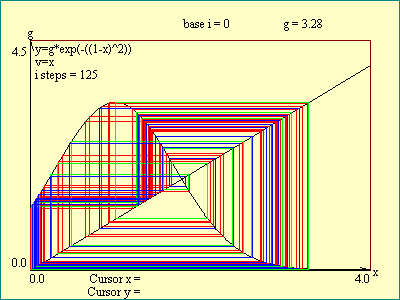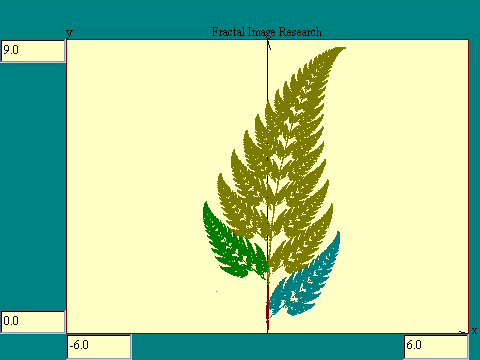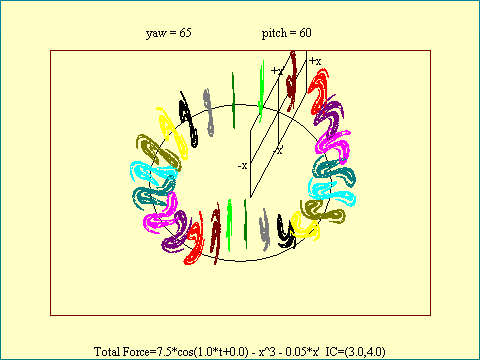|
|
|
|
The beginning...
|
Hello. My name is J. D. Jones . To find
out more about me and my background just click on my name which
should appear underlined and in a distinct color. That underlined
and colored name is an example of a "link". I will use
links throughout this on line textbook to let you jump to new
topics. I assume that since you have arrived at this page you are
somewhat familiar with navigating around web sites so I will not
spend more time on that subject. If you need additional help, use
the Help menu item on your browser.
Welcome to this on-line version of the program "Order"by M. Casco Associates. The
program is intended to introduce the mathematics of chaos to
non-mathematicians, in plain language, assuming only a solid high
school math background. Chaos theory is finding its way into many
professions, among them market analysis, medicine, manufacturing
and ecology, as well as science and engineering. A person
completing the program's lessons will be able to understand
the references to chaos appearing in their own field and apply
the principles in their work. You will find images from the science
of chaos scattered around on this page, and possibly some others.
Just pause your cursor over any image for its caption.
|

|

|
Those of us who write online material including Java applets, and those of you
who need to run those applets are caught in the crossfire of the Java war.
Microsoft tried to take over the Java virtual machine business a few years ago
and failed. Sun Microsystems, the original Java company, won that battle and
Microsoft is giving up, abandoning their Java technology and their support for
Java. All new computers will now be shipped with the Sun Java runtime environment
(JRE). That means that when websites are updated, the authors must make a
choice about whether or not to move up to the modern Java language, not
constrained by the limitations of the Microsoft virtual machine.
At M. Casco we have decided to move on, since the move will be have to be made
sooner or later. Consequently if you have a computer shipped before 2004, you
will probably need to
download a free Java plugin
from Sun and install it on your computer in order to use the applets included on
this website. We apologize for any inconvenience. It seems that this is one of
the prices we have to pay as customers for progress in the technology marketplace.
|
|
We will begin with a review of concepts from algebra and
develop the topic in such a way that we maintain its connection
to "ordinary" mathematics. The presentation is compact
but do not try to rush through it. These concepts will require
some soak time. Take time to play around with the displays. This
material is well supplemented by the book "Chaos" by
James Gleik, published by Penquin Books in 1988.
|

|

|
During this course
we will be working with fractals such as the last few images in this page.
These images arise from the repeated application of less than a half-dozen
lines of computer code. This program provides an introduction and some
capability to produce fractal graphics for the purpose of illustrating the
mathematics.
The style of the text is intentionally conversational. The
concepts we present are exciting and learning them should be fun.
Nothing is gained by obscuring this material in a fog of four-dollar words.
Click on the Next link to continue with this course. Click on
Other to go to the list of all the lessons in the course
outline.
|
 Next
Next
 Other Other
|
|
|
|




